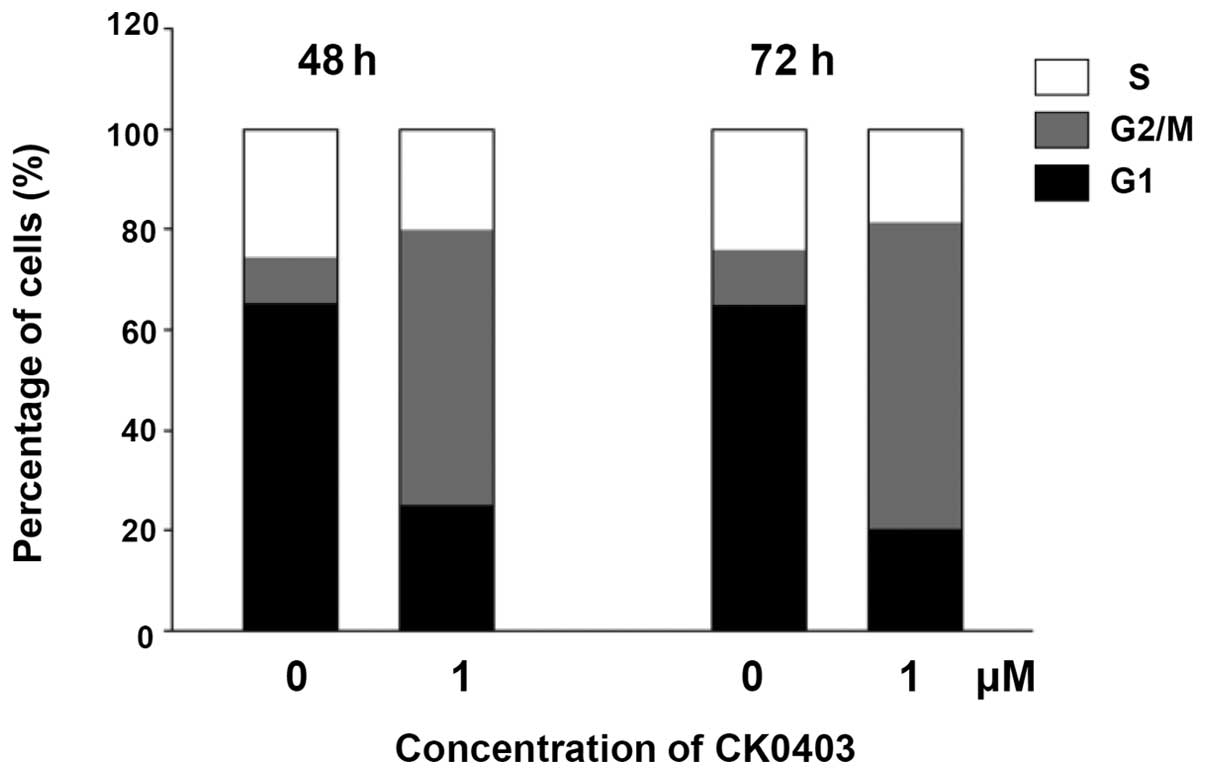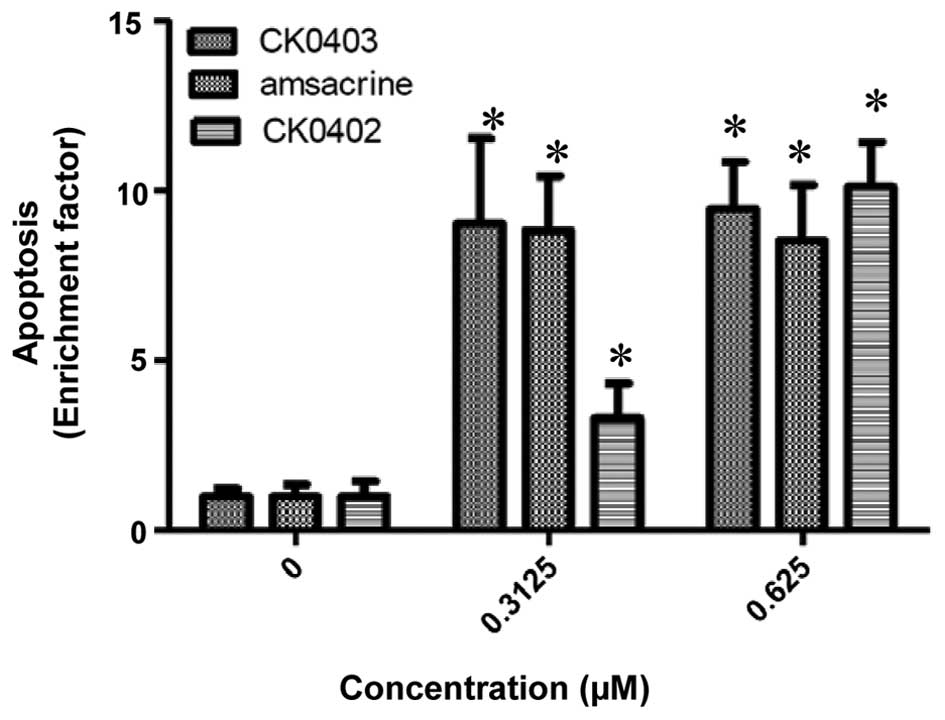|
1
|
Cancer Facts & Figures 2014. American
Cancer Society; Atlanta: 2014
|
|
2
|
Gianni L and Valagussa P: Anthracyclines
and early breast cancer: The end of an era? J Clin Oncol.
27:1155–1157. 2009. View Article : Google Scholar : PubMed/NCBI
|
|
3
|
O'Shaughnessy J: Liposomal anthracyclines
for breast cancer: Overview. Oncologist. 8(Suppl 2): S1–S2. 2003.
View Article : Google Scholar
|
|
4
|
Qian BJ, Yan F, Li N, Liu QL, Lin YH, Liu
CM, Luo YP, Guo F and Li HZ: MTDH/AEG-1-based DNA vaccine
suppresses lung metastasis and enhances chemosensitivity to
doxorubicin in breast cancer. Cancer. Immunol Immunother.
60:883–893. 2011. View Article : Google Scholar
|
|
5
|
Weiss RB: The anthracyclines: Will we ever
find a better doxorubicin? Semin Oncol. 19:670–686. 1992.PubMed/NCBI
|
|
6
|
Carvalho FS, Burgeiro A, Garcia R, Moreno
AJ, Carvalho RA and Oliveira PJ: Doxorubicin-induced
cardiotoxicity: From bioenergetic failure and cell death to
cardiomyopathy. Med Res Rev. 34:106–135. 2014. View Article : Google Scholar
|
|
7
|
Ng R, Better N and Green MD: Anticancer
agents and cardiotoxicity. Semin Oncol. 33:2–14. 2006. View Article : Google Scholar : PubMed/NCBI
|
|
8
|
Denny WA: DNA-intercalating ligands as
anti-cancer drugs: Prospects for future design. Anticancer Drug
Des. 4:241–263. 1989.PubMed/NCBI
|
|
9
|
Minotti G, Menna P, Salvatorelli E, Cairo
G and Gianni L: Anthracyclines: Molecular advances and
pharmacologic developments in antitumor activity and
cardiotoxicity. Pharmacol Rev. 56:185–229. 2004. View Article : Google Scholar : PubMed/NCBI
|
|
10
|
Baguley BC, Holdaway KM and Fray LM:
Design of DNA intercalators to overcome topoisomerase II-mediated
multidrug resistance. J Natl Cancer Inst. 82:398–402. 1990.
View Article : Google Scholar : PubMed/NCBI
|
|
11
|
Denny WA: Acridine derivatives as
chemotherapeutic agents. Curr Med Chem. 9:1655–1665. 2002.
View Article : Google Scholar : PubMed/NCBI
|
|
12
|
Nelson EM, Tewey KM and Liu LF: Mechanism
of antitumor drug action: Poisoning of mammalian DNA topoisomerase
II on DNA by 4′-(9-acridinylamino)-methanesulfon-m-anisidide. Proc
Natl Acad Sci USA. 81:1361–1365. 1984. View Article : Google Scholar
|
|
13
|
Chen KM, Sun YW, Tang YW, Sun ZY and Kwon
CH: Synthesis and antitumor activity of sulfur-containing
9-anilinoacridines. Mol Pharm. 2:118–128. 2005. View Article : Google Scholar : PubMed/NCBI
|
|
14
|
Park SK, Kang H and Kwon CH:
Caspase-dependent cell death mediates potent cytotoxicity of
sulfide derivatives of 9-anilino-acridine. Anticancer Drugs.
19:381–389. 2008. View Article : Google Scholar : PubMed/NCBI
|
|
15
|
Sun YW, Niu TK, Yang JM, Kwon CH, Chen KY
and Chen KM: Potentiation of growth inhibition activity of
2-({4-[4-(acridin-9-ylamino)phenylthio]phenyl}(2-hydroxyethyl)
amino) ethan-1-ol (CK0402) by Herceptin in SKBR-3 human breast
cancer cells. Exp Ther Med. 1:513–518. 2010.PubMed/NCBI
|
|
16
|
Yousefi S, Perozzo R, Schmid I, Ziemiecki
A, Schaffner T, Scapozza L, Brunner T and Simon HU:
Calpain-mediated cleavage of Atg5 switches autophagy to apoptosis.
Nat Cell Biol. 8:1124–1132. 2006. View
Article : Google Scholar : PubMed/NCBI
|
|
17
|
Baguley BC, Denny WA, Atwell GJ, Finlay
GJ, Rewcastle GW, Twigden SJ and Wilson WR: Synthesis, antitumor
activity and DNA binding properties of a new derivative of
amsacrine, N-5-dimethyl-9-[(2-methoxy-4-methylsulfonylamino)
phenylamino]-4-acridinecarboxamide. Cancer Res. 44:3245–3251.
1984.PubMed/NCBI
|
|
18
|
Fyfe D, Price C, Langley RE, Pagonis C,
Houghton J, Osborne L, Woll PJ, Gardner C, Baguley BC and
Carmichael J: Cancer Research Campaing Phase I/II Trials Committee:
A phase I trial of amsalog (CI-921) administered by intravenous
infusion using a 5-day schedule. Cancer Chemother Pharmacol.
47:333–337. 2001. View Article : Google Scholar : PubMed/NCBI
|
|
19
|
Bacherikov VA, Chou TC, Dong HJ, Zhang X,
Chen CH, Lin YW, Tsai TJ, Lee RZ, Liu LF and Su TL: Potent
antitumor 9-anilinoacridines bearing an alkylating N-mustard
residue on the anilino ring: Synthesis and biological activity.
Bioorg Med Chem. 13:3993–4006. 2005. View Article : Google Scholar : PubMed/NCBI
|
|
20
|
Kapuriya N, Kapuriya K, Zhang X, Chou TC,
Kakadiya R, Wu YT, Tsai TH, Chen YT, Lee TC, Shah A, et al:
Synthesis and biological activity of stable and potent antitumor
agents, aniline nitrogen mustards linked to 9-anilinoacridines via
a urea linkage. Bioorg Med Chem. 16:5413–5423. 2008. View Article : Google Scholar : PubMed/NCBI
|
|
21
|
Su TL, Lin YW, Chou TC, Zhang X,
Bacherikov VA, Chen CH, Liu LF and Tsai TJ: Potent antitumor
9-anilinoacridines and acridines bearing an alkylating N-mustard
residue on the acridine chromophore: Synthesis and biological
activity. J Med Chem. 49:3710–3718. 2006. View Article : Google Scholar : PubMed/NCBI
|
|
22
|
Chun YS, Adusumilli PS and Fong Y:
Employing tumor hypoxia for oncolytic therapy in breast cancer. J
Mammary Gland Biol Neoplasia. 10:311–318. 2005. View Article : Google Scholar
|
|
23
|
Adamski JK, Estlin EJ and Makin GW: The
cellular adaptations to hypoxia as novel therapeutic targets in
childhood cancer. Cancer Treat Rev. 34:231–246. 2008. View Article : Google Scholar : PubMed/NCBI
|
|
24
|
Sui X, Chen R, Wang Z, Huang Z, Kong N,
Zhang M, Han W, Lou F, Yang J, Zhang Q, et al: Autophagy and
chemotherapy resistance: A promising therapeutic target for cancer
treatment. Cell Death Dis. 4:e8382013. View Article : Google Scholar : PubMed/NCBI
|
|
25
|
Tamura N, Hirano K, Kishino K, Hashimoto
K, Amano O, Shimada J and Sakagami H: Analysis of type of cell
death induced by topoisomerase inhibitor SN-38 in human oral
squamous cell carcinoma cell lines. Anticancer Res. 32:4823–4832.
2012.PubMed/NCBI
|
|
26
|
Rubinstein AD and Kimchi A: Life in the
balance-a mechanistic view of the crosstalk between autophagy and
apoptosis. J Cell Sci. 125:5259–5268. 2012. View Article : Google Scholar
|













